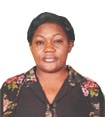
Tourist Attraction - Mount Cameroon
Gladys Ambo, Douala
Cameroon - Oct 2007
Cameroon also known as ‘Africa in miniature’ and described by its government as the ‘melting pot of Africa’ is found in the West African sub-region.
It is a country that has been blessed with many tourist attractions. Its ministry of tourism was created in the 1970’s to encourage investment in this sector. Tourist attractions include amongst others; wildlife parks, highlands, lakes, Mankon Fondom (kingdom) and museums.
Despite government’s efforts over the past decade to boost the sector its growth has been hampered by poor infrastructure and mal administration. However, this has not deterred foreigners from visiting the country’s attractions.
One of the main sites that attracts many foreigners and nationals alike is ‘Mount Cameroon’ also known as ‘Mount Fako’. It is situated in Buea, in the Fako division of the South West province of the country.
It measures 4100 kilometres. It is the highest point in Central Africa and the second highest point in Africa after Mount Kilamanjaro in Kenya. The mountain rises from the coast through tropical rainforest to a bare summit which is cold, windy and occasionally brushed with snow.
The Mount Cameroon forests are under threat from uncontrolled forest exploitation and encroachment for agricultural production. A population of approximately 350,000 people live within its immediate vicinity, and around half of this population live in the urban settlements of Limbe and Buea.
The Bakweri, Bomboko and Balundu people traditionally live on and around the mountain, together with the coastal Bimbia clans; the livelihoods of these people are directly or indirectly supplemented through the harvesting of the forests resources such as timber and non-timber products such as removing bark for medicines, gathering wild vegetables, collecting rattans for making furniture and hunting.
The mountain has erupted six times in the previous century. The latest recorded eruption was in March/ April 1999. During the eruption, the lava flow destroyed farmlands in localities found on the slope of the mountain such as Bakingili, Batoke and Upper farms.
In local folklore the God of the mountain is known as Efasah Moto. It’s believed to be composed of two halves, i.e. man and stone; it is also believed that it takes care of people by providing them with water, shelter and food during their journey up and down the mountain. Visitors are allowed to harvest what they can consume while on the mountain but are not allowed to take away anything provided by Efasah Moto.
Belief in the God provides an interesting cultural link to ecotourism and sustainable use of resources. Apart from individuals or groups who go for excursions on the mountain there is an annual international race that is organised by the Government known as the ‘Mount Cameroon Race of Hope’. The initiative was started in 1995 by the company that brews Guinness.
The race usually brings together hundreds of athletes with scores of them coming from abroad. The starting point of the race is the Molyko Omnisport stadium and participants pass through upper farms, huts 1,2 & 3 before reaching the summit and returning back to the starting point. Participants are divided into male and female categories, they are then further sub-divided into professionals, youths, and amateurs.
The first winner of the male category usually takes just over 4 hours to complete the race while that for the female category usually takes around 4 hours and 30 minutes. Prize money is in the region of two thousand pounds.
